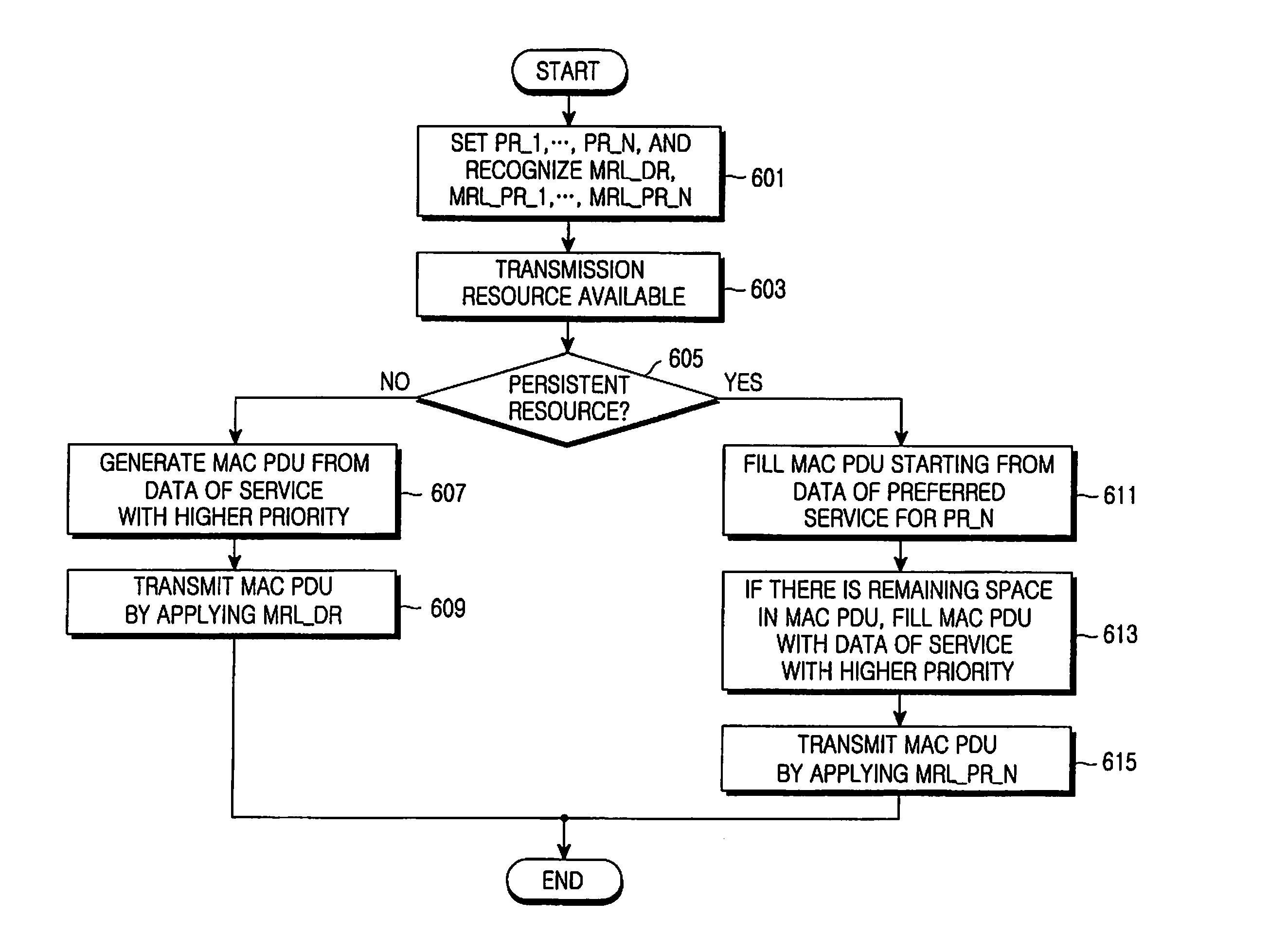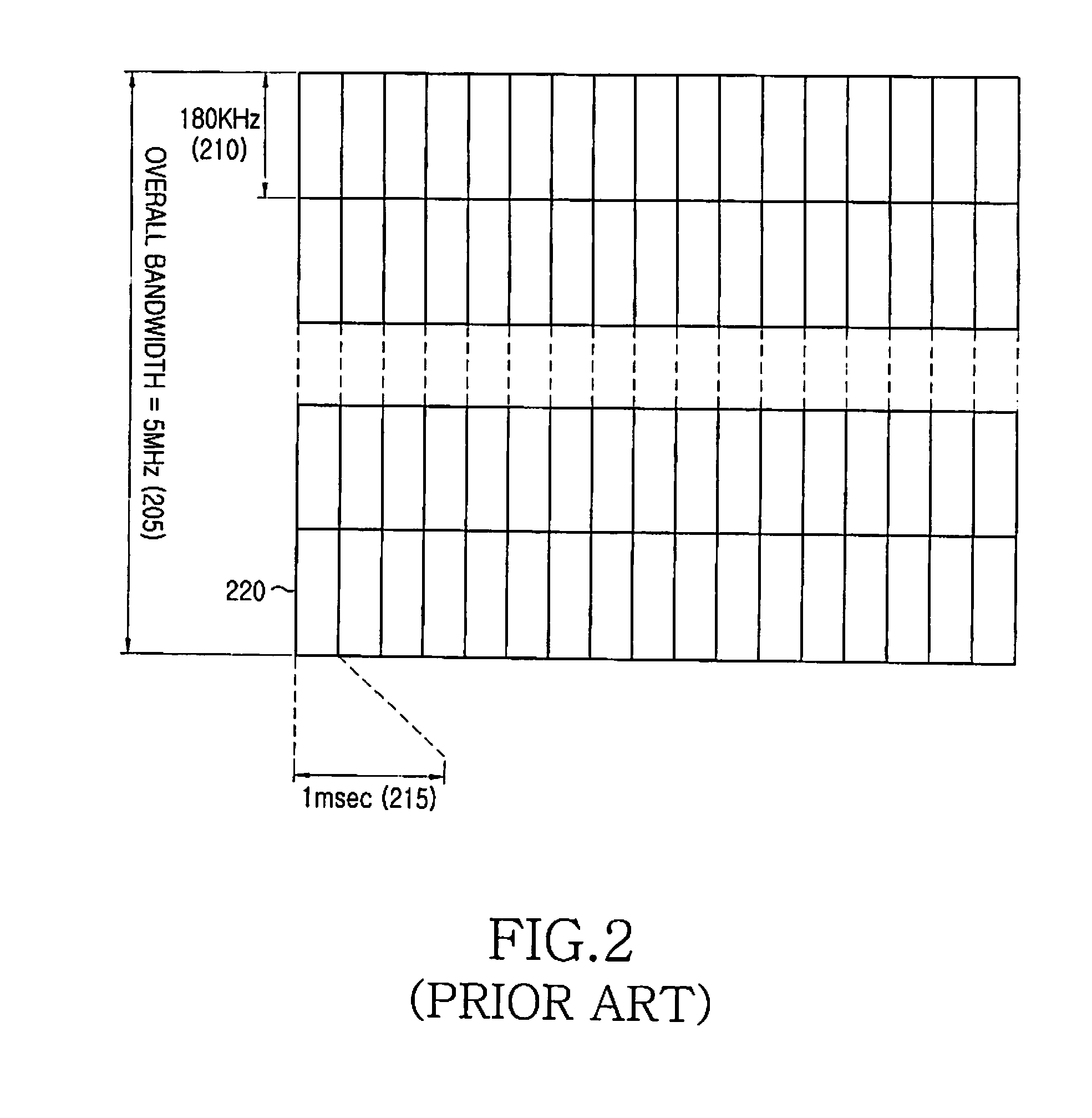Method and apparatus for transmitting and receiving packet data between a node b and a ue using HARQ in a mobile communication system
a mobile communication system and packet data technology, applied in the field of mobile communication system methods and apparatuses, can solve the problems of severe fading on the transmission path, limited harq packet data retransmission limit, frequency selective fading, etc., and achieve the effect of efficient use of transmission resources and flexible allocation of transmission resources
- Summary
- Abstract
- Description
- Claims
- Application Information
AI Technical Summary
Benefits of technology
Problems solved by technology
Method used
Image
Examples
first embodiment
[0051]The present invention includes two exemplary embodiments. First, a method according to a first exemplary embodiment of the present invention will be described. In the method according to present invention, a receiving party can determine if a maximum retransmission limit of a packet is reached without the aid of a separate external control signal by fixing the maximum retransmission limit of a packet, which is transmitted over a specific transmission resource, to a predetermined value.
[0052]As described above, a maximum retransmission limit of data is closely connected with a Maximum Permission Delay (MPD). For example, assuming that the MPD of any data is 50(x)msec, a sum of all transmission delays for the data, except a delay occurring in a wireless channel, is 30(y)msec, an MPD during a HARQ retransmission time of the data is 50−30=20(x−y)msec. Here, “y” may be a sum of transmission delays occurring between an ENB and a gateway, between the gateway and an access network whe...
second embodiment
[0086]FIG. 8 illustrates a concept of transmitting and receiving packet data between an ENB and a UE using an HARQ scheme in a mobile communication system according to the present invention. The UE is previously allocated a transmission resource, which is used for requesting the ENB to allocate a transmission resource thereto, from the ENB at regular intervals. For reference, the resource for requesting resource allocation may be set in such a manner that it is used only for one UE or is used in common for a plurality of UEs. Also, because the size of the resource for requesting resource allocation cannot exceed a certain limit, the amount of information transmitted over the resource for requesting resource allocation is also very limitative. Therefore, the UE usually transmits information, which indicates whether or not there is data to be transmitted, to the ENB over the allocated resource for requesting resource allocation. For the convenience of explanation, the information indi...
PUM
 Login to View More
Login to View More Abstract
Description
Claims
Application Information
 Login to View More
Login to View More - R&D
- Intellectual Property
- Life Sciences
- Materials
- Tech Scout
- Unparalleled Data Quality
- Higher Quality Content
- 60% Fewer Hallucinations
Browse by: Latest US Patents, China's latest patents, Technical Efficacy Thesaurus, Application Domain, Technology Topic, Popular Technical Reports.
© 2025 PatSnap. All rights reserved.Legal|Privacy policy|Modern Slavery Act Transparency Statement|Sitemap|About US| Contact US: help@patsnap.com



